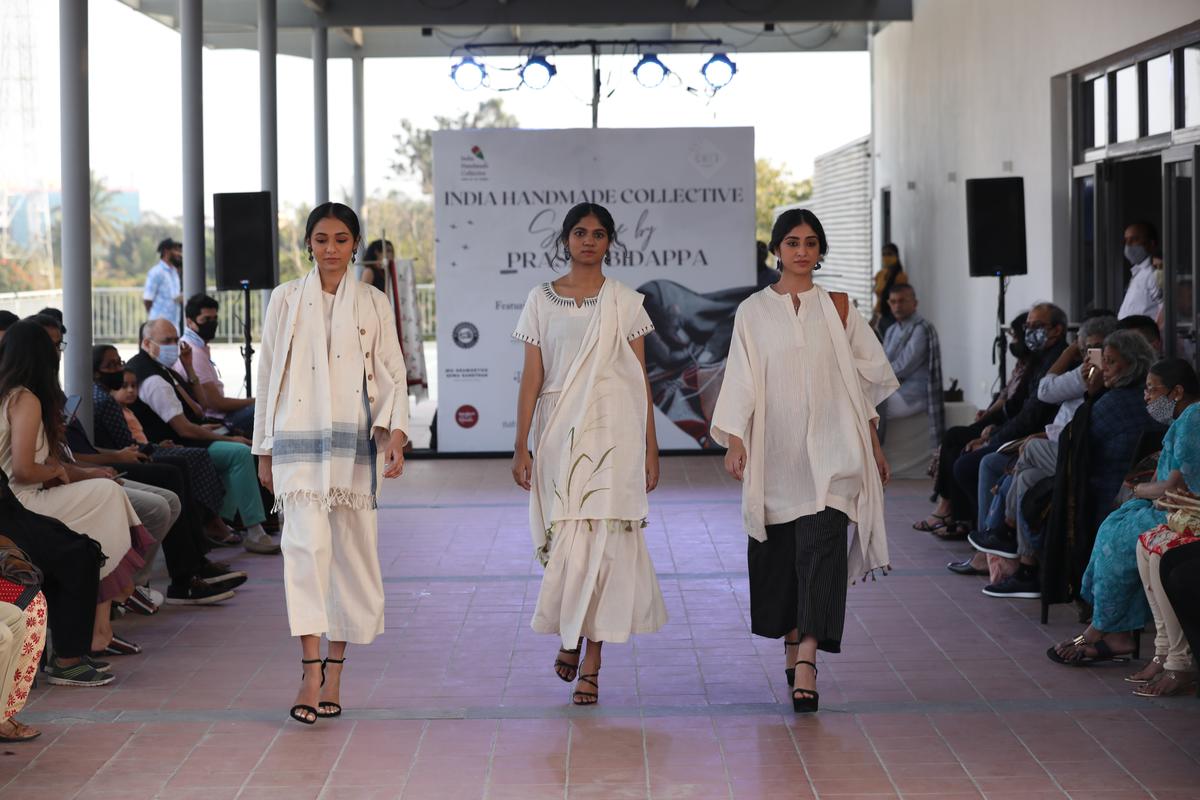Have you ever wondered what process goes into the handloom beauties you wear? This Deepavali, take the opportunity to stock up on your favourite handloom weaves and even learn the art of spinning and weaving at workshops guided by experts at S.A.L.T Stories – a natural dye handmade exhibition.
In its fifth edition, the handloom showcase in Secunderabad is brought by India Handmade Collective (IHMC) including a group of handmade and handloom artisans. Working individually or with organisations, the members got together in November 2020, post the lockdown crisis, to support struggling artisans, informs Ananthasayanan aka Anathoo, founder of the social enterprise TULA. Volunteers of this Chennai-based social enterprise work with farmers growing the traditional Indian cotton which is handspun, handwoven, natural dyed and manually tailored.
Forming a collective
“We had no business during the pandemic but these artisans couldn’t stop as it was their only source of income. We can’t stop a weaver from weaving or spinning. Stocks kept piling and we couldn’t stop artisans from producing,” he recollects. Rather than going online individually and struggling, members of the weaving community, even those outside TULA , decided to form a collective and go online.
The group’s handloom exhibitions do not merely display products, but also hold workshops conducted by experts in an attempt to create more interest in handloom. “The aim is to make people connect with weaving; the moment one spins a charkha, the respect for handspun products rises and that stays for life; so even if they don’t buy from us, we are content to have created the awareness.” Prices for products here range from ₹1000 for a cotton kurti and ₹3000 for saris upwards.

The members also support each other by sharing their skills. Apart from Telangana’s Blue Lotus, other participating groups include Maghan Sangrahalaya from Wardha in Maharashtra and Nature Alley in Karnataka. Some of the sessions include Sustainable Clothing and Conscious Consumption by Anathoo, Coconut Shell Craft Workshop by Ananda Perumal (Kavin Art Gallery, Tirunelveli), The Bengal Muslin and Other Old World Skills by Arup Rakshit (MG Gramodyog Sewa Samsthan, West Bengal) and Natural Dyeing Workshop by Jahnavi (Team TULA).
How does a group join the collective? The number of artisans working in a group and the percentage of shared profits among them play a determining factor for groups wanting to be part of this collective. “Transparency and interest to share skills and engaging with customers are also important,” he adds.
Referring to their journey as organic, Anathoo says, “It’s a slow process. We don’t want to suddenly become a group with 200 members as we also want to create enough market for the Collective.”
India Handmade Collective exhibition Handmade and Handlooms from around India’ is on at Chaurah auditorium, Our Sacred Space in Secunderabad from October 6-9, 10am to 8pm.























